
Abel Delos Streight was a peacetime lumber merchant and publisher, and was a Union Army colonel in the American Civil War. His command precipitated a notable cavalry raid in 1863, known as Streight's Raid. He was a prisoner of war for 10 months. On March 12, 1866, his nomination for appointment to the grade of brevet brigadier general, to rank from March 13, 1865 was confirmed. He later became a politician, and served as a state senator in Indiana for two terms.
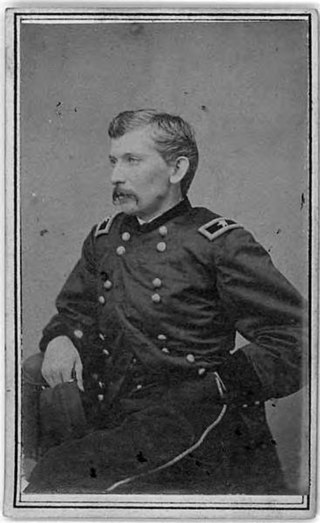
James William Forsyth was a U.S. Army officer and general. He was primarily a Union staff officer during the American Civil War and cavalry regimental commander during the American Indian Wars. Forsyth is best known for having commanded the 7th Cavalry at the Wounded Knee Massacre on December 29, 1890, during which more than 250 men, women, and children of the Lakota were killed and more than 50 were wounded.

The Libby Prison escape was a prison escape from Libby Prison, a Confederate prison at Richmond, Virginia in February 1864 that saw over 100 Union prisoners-of-war escape from captivity. It was one of the most successful prison breaks of the American Civil War.
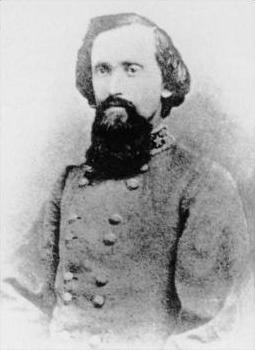
Otho French Strahl was an American attorney and a brigadier general in the Confederate States Army during the American Civil War. He was one of a small number of Southern generals who were born in the North.
The 2nd Kentucky Infantry Regiment was an infantry regiment that served in the Confederate States Army during the American Civil War. It was part of the First Kentucky Brigade.
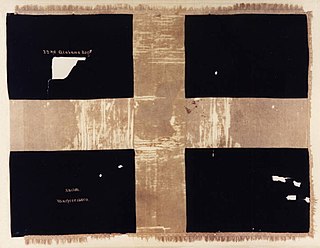
The 22nd Alabama Infantry Regiment was an infantry regiment that served in the Confederate Army during the American Civil War.

Samuel Beatty was an American soldier, sheriff, and farmer from Ohio. He was a brigadier general in the Union Army during the American Civil War. In 1866, he was awarded the brevet grade of major general of volunteers.

Charles Garrison Harker was a brigadier general in the Union Army during the American Civil War. He was killed in action at the Battle of Kennesaw Mountain in northern Georgia during the Atlanta Campaign. Fort Harker in Kansas, an active garrison of the United States Army from 1866 to 1872, was named in his honor. The Charles G. Harker School in the Swedesboro-Woolwich School District, New Jersey, is named in his honor.

32nd Regiment Indiana Volunteer Infantry was a Union Army infantry regiment during the American Civil War. It was also known as Indiana's "1st German" regiment because its members were mainly of German descent. Organized at Indianapolis, the regiment's first recruits mustered into service on August 24, 1861. From 1861 to 1865, the 32nd Indiana was attached to the first Army of the Ohio and the Army of the Cumberland, where it served in the Western Theater.
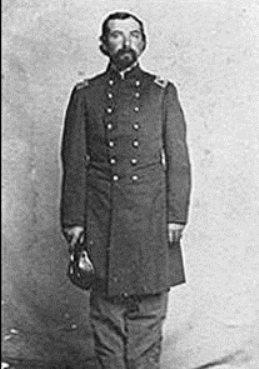
Frederick Knefler served in the Union Army in the U.S. Civil War, joining as a first lieutenant in May 1861. He served as a staff officer and as colonel of the 79th Indiana Infantry Regiment and an acting brigade commander. In 1866, he was nominated and confirmed for appointment to the grade of brevet brigadier general of volunteers, to rank from March 13, 1865.

Preston Smith was a lawyer and soldier from the state of Tennessee who served as a general in the Confederate States Army during the American Civil War. He was killed in action during a night attack during the Battle of Chickamauga in northern Georgia.
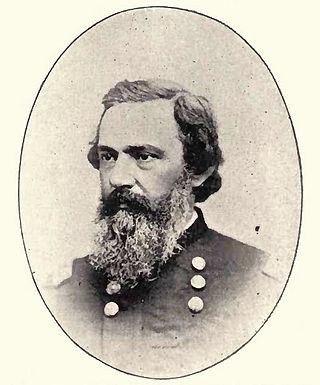
John Eugene Smith (1816-1897) was a Swiss immigrant to the United States, who served as a Union general during the American Civil War.
The 77th Pennsylvania Volunteer Infantry was an infantry regiment that served in the Union Army during the American Civil War.
Hispanics in the American Civil War fought on both the Union and Confederate sides of the conflict. Not all the Hispanics who fought in the American Civil War were "Hispanic Americans" — in other words citizens of the United States. Many of them were Spanish subjects or nationals from countries in the Caribbean, Central and South America. Some were born in what later became a U.S. territory and therefore did not have the right to U.S. citizenship. It is estimated that approximately 3,500 Hispanics, mostly Mexican-Americans, Puerto Ricans and Cubans living in the United States joined the war: 2,500 for the Confederacy and 1,000 for the Union. This number increased to 10,000 by the end of the war.
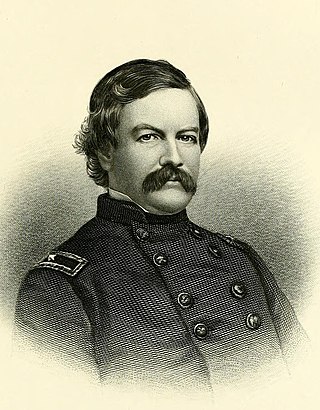
Harrison Carroll Hobart was an American lawyer, Democratic politician, and Union Army officer during the American Civil War. He was the 2nd speaker of the Wisconsin State Assembly, and served in the 1st Wisconsin Legislature as a member of the Wisconsin Senate. He was the Democratic nominee for Governor of Wisconsin in 1859 and 1865.
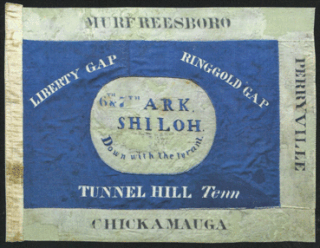
The 7th Arkansas Volunteer Infantry (1861−1865) was a Confederate Army infantry regiment during the American Civil War. Organized mainly from companies, including several prewar volunteer militia companies, raised in northeastern Arkansas, the regiment was among the first transferred to Confederate service, and spent virtually the entire war serving east of the Mississippi River. After the unit sustained heavy casualties in the Battle of Shiloh and the Kentucky Campaign, the unit spent most of the rest of the war field consolidated with the 6th Arkansas Infantry Regiment to form the 6th/7th Arkansas Infantry Regiment.

William J. Carson was a United States Army soldier and recipient of the United States' highest military decoration, the Medal of Honor, for his actions at the Battle of Chickamauga in the American Civil War.

The 1st Florida Infantry Regiment was an infantry regiment raised by the Confederate state of Florida during the American Civil War. Raised for 12 months of service its remaining veterans served in the 1st (McDonell's) Battalion, Florida Infantry from April 1862 on. In August the depleted battalion was consolidated with the 3rd (Miller's) Battalion into the reorganized 1st Florida Infantry Regiment again. In December 1862 it merged with the 3rd Florida Infantry Regiment and received the form it kept till the war's end as the 1st and 3rd Consolidated Florida Infantry Regiment. Fighting as part of the Army of Tennessee in the Western Theater of the American Civil War it was surrendered on April 26, 1865.

The 56th Pennsylvania Volunteer Infantry was an infantry regiment that served in the Union Army during the American Civil War. The unit has the distinction of being the first Union Army infantry regiment to open fire at the Battle of Gettysburg.

Benjamin Franklin Fisher (1834-1915) was an American Brevet Brigadier General who was a Chief Signal Officer of the Army of the Potomac during the Siege of Petersburg of the American Civil War. He was also known for being one of the escapees of the Libby Prison escape

















